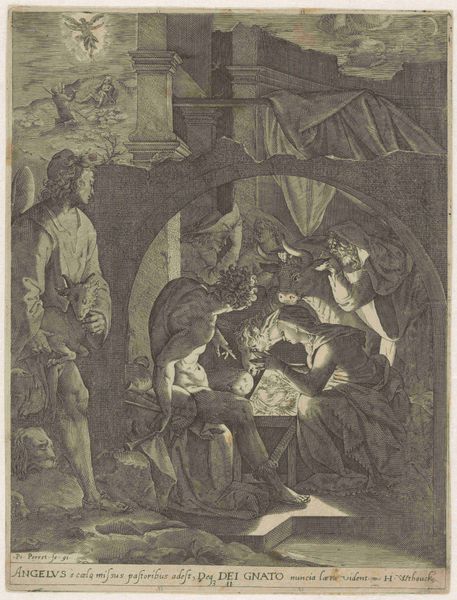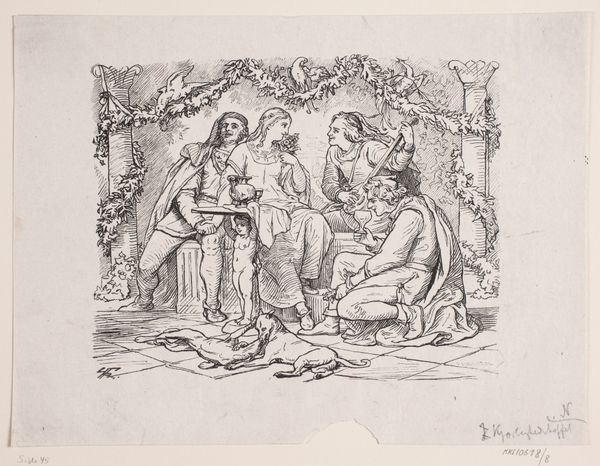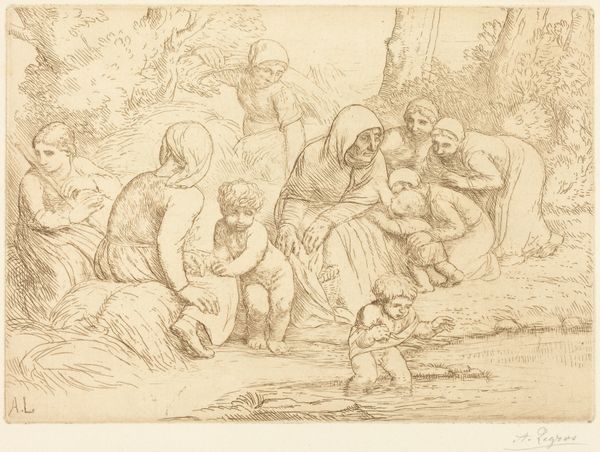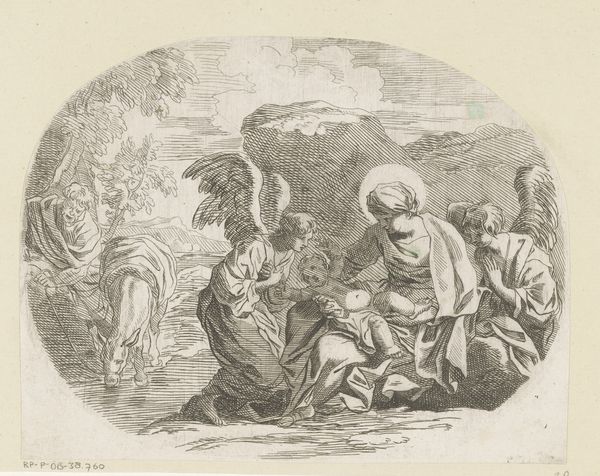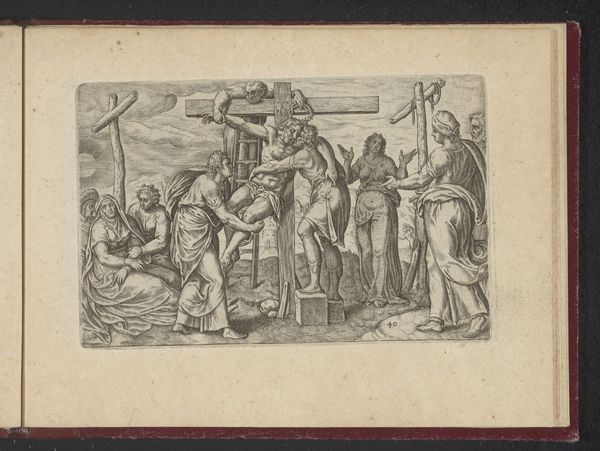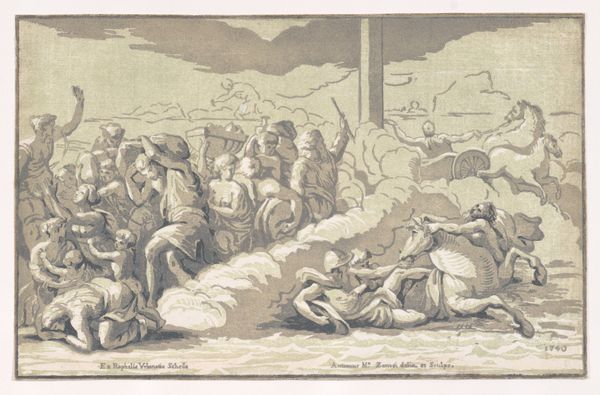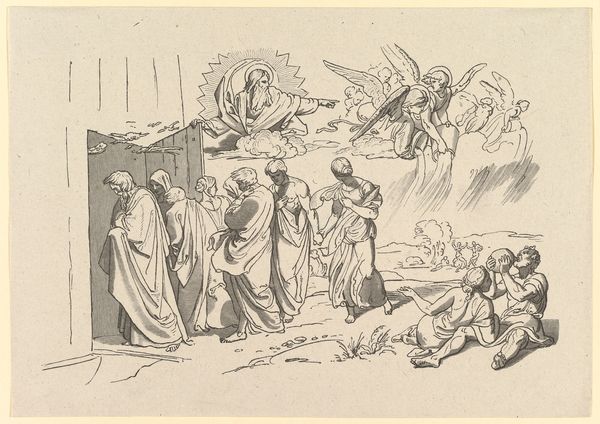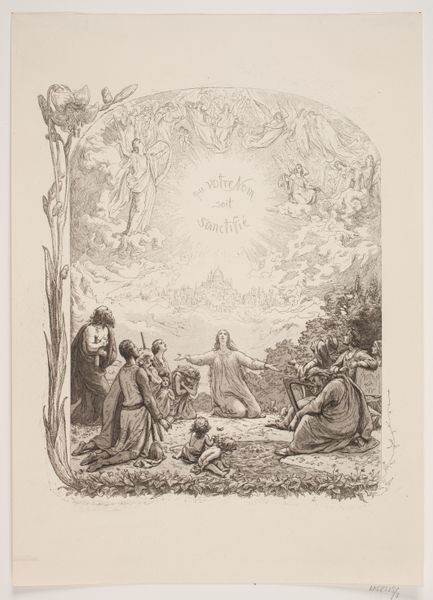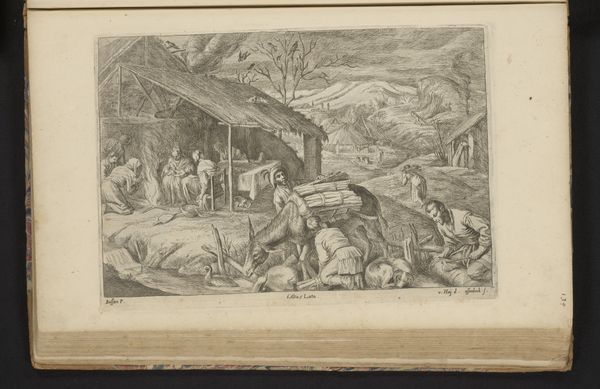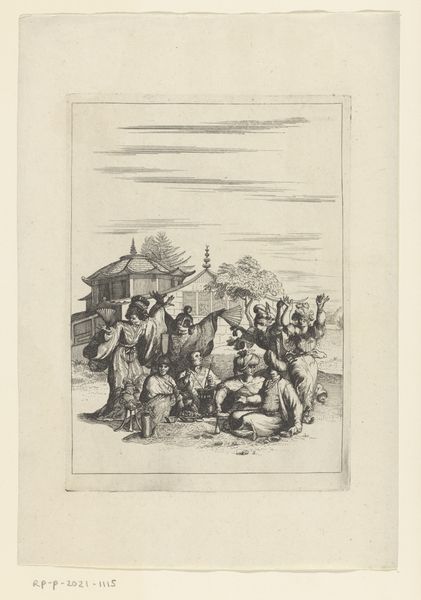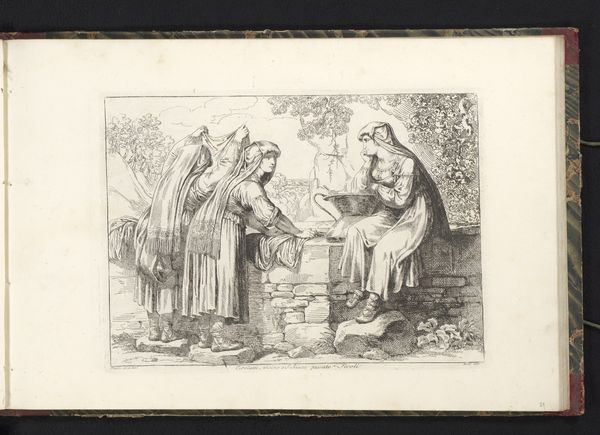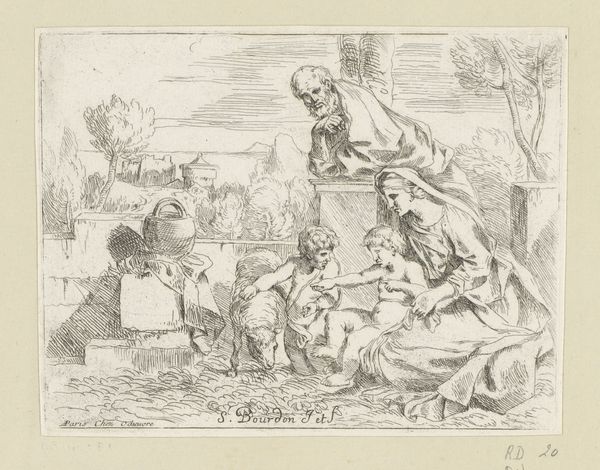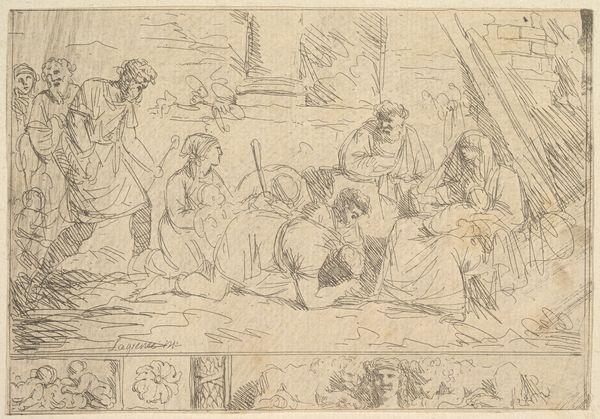
drawing, ink
#
drawing
#
landscape
#
figuration
#
ink
#
line
#
history-painting
Dimensions: height 247 mm, width 352 mm
Copyright: Rijks Museum: Open Domain
Jean-Baptiste Corneille created this print, *The Birth of Christ*, using etching, a printmaking technique, sometime before his death in 1695. The linear quality of the artwork is due to the etching process itself. A metal plate, likely copper, was coated with a waxy, acid-resistant substance called a ‘ground,’ and the artist then scratched away lines to expose the metal beneath. When the plate was immersed in acid, these exposed lines were ‘bitten’ into the plate. The longer the plate sat in the acid bath, the deeper the lines became, creating darker, more pronounced lines on the final print. After the plate was cleaned and inked, it was pressed onto paper. The etching medium allowed Corneille to achieve fine details. He used line and hatching to render tone and texture, carefully varying the weight and density of lines to depict light, shadow, and form. This print, like many others, could be reproduced multiple times, democratizing images and ideas. The labor-intensive process reflects a traditional approach to art-making, distinct from industrial modes of production. But the very possibility of reproducing images, using these techniques, reflects the growing impact of print culture, and the wider world of trade and consumption.
Comments
No comments
Be the first to comment and join the conversation on the ultimate creative platform.
